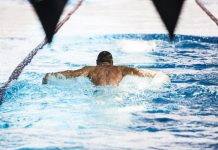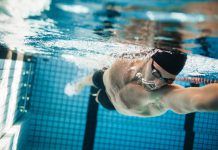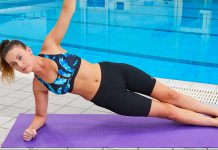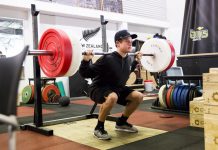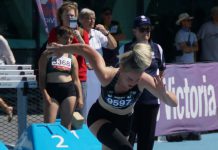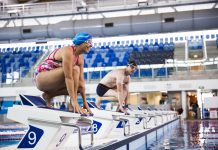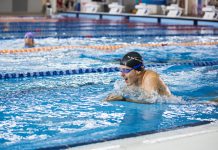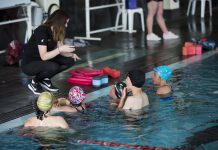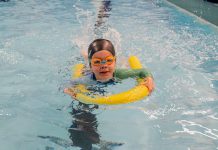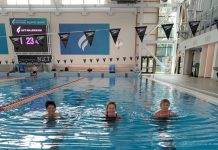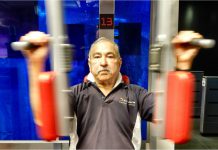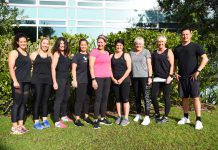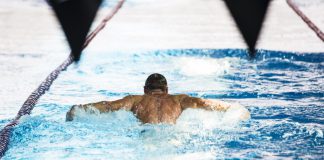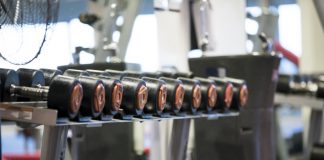This month’s focus is on correct breathing position, as well as the correct timing of the breaths you take. This is extremely important across all four strokes… and yes, that includes backstroke! Breathing can either make or break your stroke, so here are some important things to remember when you breathe while swimming.
Freestyle
In freestyle it is important to make sure that you are breathing to the side with as little lift from your head as possible. Your head acts as a balancer for the rest of your body. Therefore, if you lift your head when you breathe, your legs will drop.
One factor in the breathing position that we notice a lot of swimmers forget about is where their extended arm is in relation to the water. It is important when breathing in freestyle that we have one arm extended out in front for longer. This promotes the correct breathing position, which in turn, will help to maintain correct body position in the water.
Another important aspect to remember is to slowly release your air when your face is in the water! Exhaling underwater will allow you to solely inhale when you lift your head, as well as help you to maintain your breathing pattern.
Finally, the timing. When we breathe in freestyle, it is important that we initiate the breath when our opposite arm is entering the water. This allows us to get a full breath in before we need to get our face back down in the water. It is important that we get our face down before our raised arm gets in front. If you find that you are spending too much time on your side because you feel like you need the air, then I suggest working on exhaling underwater between strokes.
Backstroke
Many people think that in backstroke you can just breathe whenever you like. However, it is just as important as the other strokes to breathe in a pattern or rhythm. How we breathe can affect how our body sits in the water. If we breathe randomly, this can lead to a compromised body position. It is important to breathe to a pattern that fits your stroke. This will take some practice, but eventually will become second nature to you.
It is also important to be able to breathe when your face is above the water. You may find times when water goes on your face. Obviously, this is not the time to breathe in, and finding a pattern will help with this.
Just like in all strokes, the head position can have an impact on your body position. Make sure your head is pushed back and you are looking to the ceiling in order to maximise your breath as well as improve your body position in the water.
Breaststroke
Breaststroke is a little different to the other strokes as you have to take a breath for each stroke you do. Make sure the timing of your breath is correct in order to maintain rhythm within the stroke.
It is important to release the air when you are gliding/stretching forward so that you are able to take in all the air that you need each stroke you take. Again, finding the rhythm in your breathing pattern is essential to maintaining the correct stroke.
We want to breathe in once we have lifted our head and shoulders out of the water to perform the sweep/scoop motion of the stroke. Our head needs to be back down again during the stretch/glide position where we exhale before repeating.
Butterfly
Butterfly is a stroke that relies heavily on rhythm. One small error in your timing can have a big impact on your efficiency, as well as how hard you have to work. In order to make butterfly easier for you, I cannot stress enough how critical the timing is when it comes to your breath.
It is important that you initiate the breath in the catch phase of the stroke. If we leave it too late (i.e. until our arms are down by our side) then we are going to struggle to keep our momentum, as well as get our head back down in time to initiate the next stroke. We want to have our heads back down before our arms get in front in order to maintain the correct rhythm.
There are many different ways you can keep a rhythm in your stroke. I suggest that when learning you use a head down for one stroke/breathe for one stroke pattern. This will allow you to still get enough air in while practising the stroke with your head down, as well as breathing. Other patterns may be 2/1/1, or 2/1.
If you would like to know more about backstroke, breaststroke and butterfly check out our article on technique tips and drills here.


